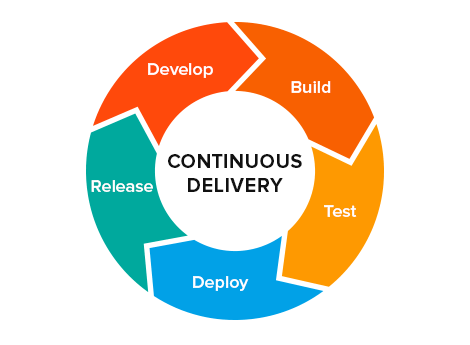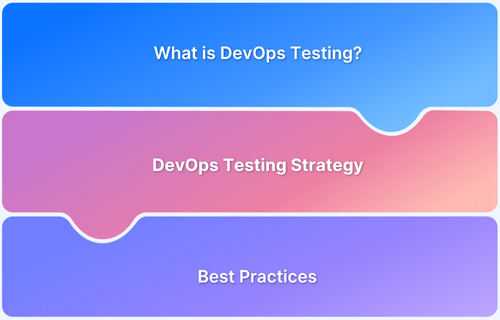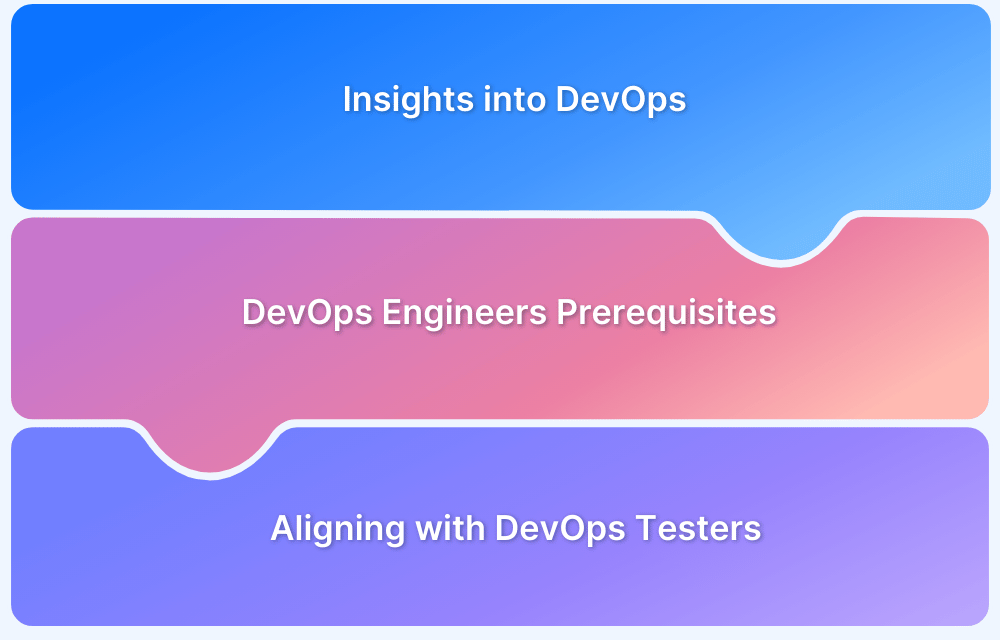The primary goal of DevOps is to bridge the gap between development and operations teams. It creates a streamlined, efficient workflow that delivers software faster and with higher quality.
By focusing on collaboration, automation, and continuous feedback, DevOps empowers teams to release updates on demand. It also helps optimize resources and build scalable products.
Overview
The Primary Goal of DevOps
- The Ability to Deliver Value
- Learning from Experimentation
- Measuring what matters
- Faster Software Product Velocity
- Improving the Value Chain
- Moving away from silos
- Encouraging Cross-Functionality in teams
- Enhance Team Collaboration
- Accelerate Feedback Loops
- Enable On-Demand Releases
- Optimize the Use of Resources
- Create More Scalable Products
This article breaks down the core goals of DevOps and explores how they drive productivity and innovation in modern software development.
What is DevOps?
DevOps is a set of practices that enhance collaboration between development (Dev) and operations (Ops) teams to streamline the software build, validation, deployment, and development processes.
By emphasizing integration, collaboration, and automation, DevOps enables Development and operations teams to work together more effectively. This approach helps standardize development environments and enhances the predictability, efficiency, and security of the software development lifecycle.
The Primary Goal of DevOps
“The ultimate goal of DevOps in any organisation is to help optimise this flow of business value from the conception of the business idea to the end-product at the hands of the user; all the while encouraging greater collaboration between the stakeholders involved.”
Though DevOps seeks to bring together the development and operations teams and process for greater product release velocity, the ultimate goal of DevOps can only be achieved through a comprehensive cultural change in the company itself.
This optimization of business value flow can be understood in terms of:
- The Ability to Deliver Value
- Learning from Experimentation
- Measuring what matters
- Faster Software Product Velocity
- Improving the value chain
- Moving away from silos
- Encouraging Cross-Functionality in teams
This article will look into each of these in some detail.
Must Read : A Beginner’s Guide to DevOps
1. The Ability to Deliver Value
Every organisation has to be able to deliver significant value to its stakeholders in order to survive in the market. DevOps allows teams to reduce risk and expedite delivery of thoroughly tested code and be more responsive to customer requests and changes
2. Learning from Experimentation
Continuous experimentation allows for a greatly expedited learning curve in which the teams can perform course correction at the source and not wait until product delivery to be able to learn from their mistakes.
Devops stands in stark contrast to traditional software development models in that, it embraces the culture of Continuous Everything (Continuous Planning, Continuous Integration, Continuous Deployment, Continuous Delivery, Continuous Testing, and Continuous Monitoring) in order to be more responsive to change.
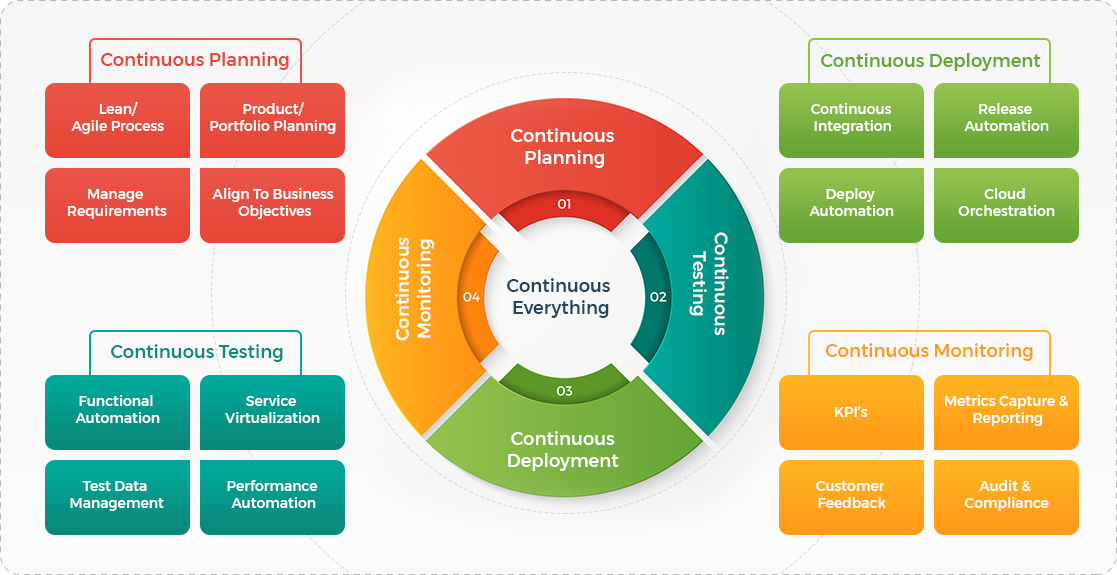
3. Measuring what matters
Sometimes organisations get so big and processes so complex that objective, data-driven feedback loops become impossible to implement. DevOps utilises several metrics like
- Mean Time to Failure/Repair/Diagnose (MTTF/MTTR/MTTD): These help to quantify the risks of any potential pipeline failures. This needs to be minimised in order to have a healthy performance overall
- Time to Value: This is the time taken to build and push a piece of software to production, thus ensuring that the work done begins to generate value. This must be minimised as much as possible in order to increase the benefits of using DevOps
To allow the focus to remain on what’s important and optimise the entire DevOps pipeline.
4. Faster Software Product Velocity
Software teams today do not have the choice between getting software delivery right or getting it done fast. They must be able to do both consistently in order to maintain a competitive advantage. Teams often lose time and money in bug fixes, code rework, having to wait on stakeholders for support, etc.
A Key component in DevOps is Continuous Delivery which allows teams to meet business objectives in a timely and consistent manner by synchronising the Build-Test-Deploy cycle.
Continuous Delivery in DevOps
Must Read : How to Accelerate Product Release Velocity
It also brings together different stakeholders like Business Analysts, Developers, Testers, and IT Operations personnel in cross-functional teams and creates synchronous workflows so that wait time is reduced.
Pro Tip : Manual tests are not ideal for Continuous Delivery. They lead to extended lag times between development and test completion, and are generally prone to human errors. Automated tests on Emulators/Simulators are also not ideal as they fail to replicate real time conditions. BrowserStack Automate and App Automate allow integrations with DevOps tools like Azure DevOps and lets users execute tests using Selenium, Appium, etc on 3500+ cloud based devices.
5. Improving the Value Chain

Many organizations adopt DevOps to regain lost productivity and maximize the value of their products. As businesses expand, they often struggle to pinpoint where changes are needed within their complex processes.
DevOps helps automate tasks and connect systems, so improvements in one area positively impact the whole pipeline. This unified approach enables smoother, controlled changes across the organization, reducing the risk of disruptions and keeping everything moving forward together.
6. Moving away from silos
Teams naturally tend to operate in silos, especially in large organisations. This prevents the creation of a smooth end-to-end DevOps pipeline, and creates an adversarial relationship between teams. The ultimate goal of DevOps is to reduce wait times and minimise rework. The creation of silos prevents a sense of total ownership. DevOps teams avoid the blame game associated with the “who is responsible” mindset and allows the unified allocation of resources by leveraging the flexibility of cross-functional teams.
7. Encouraging Cross-Functionality in teams
A cross-functional team includes developers, QA’, Business Analysts, and support personnel in its basic structure. Software teams bent on production speed often become overloaded with developers and can’t produce software fast enough because it is not enough to simply write code. Such teams spend weeks in “analysis paralysis” going back and forth with other stakeholders on trying to determine the features that are fit to go into the next release. The lack of collaboration often means that everyone is not on the same page and is a major cause of friction during communication.
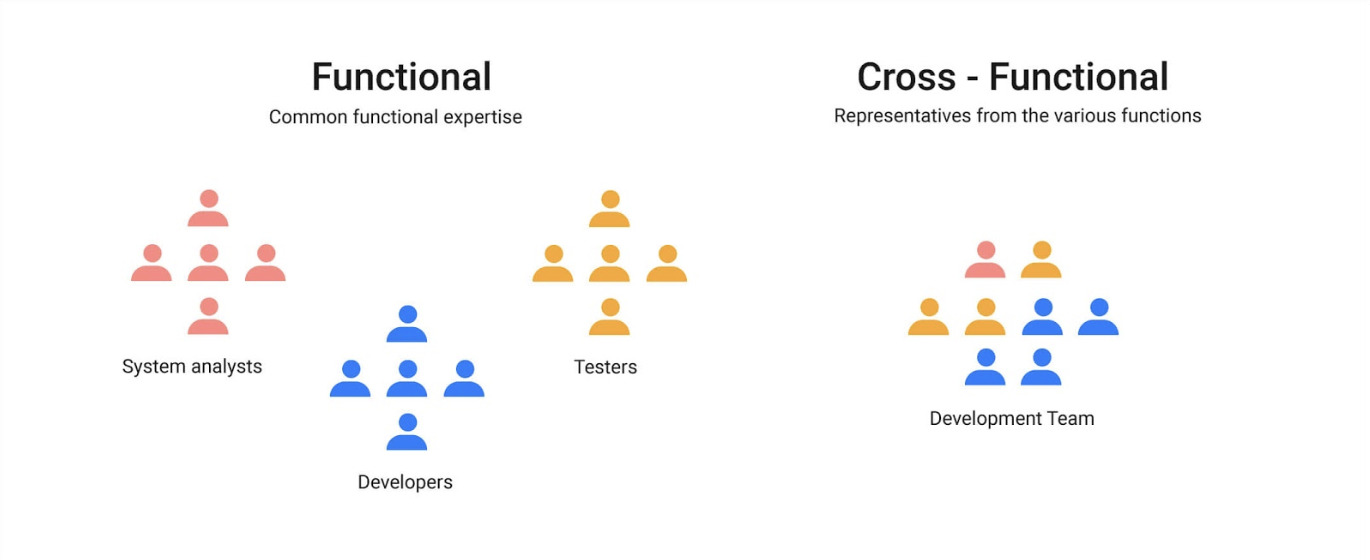
The DevOps lifecycle works on a Plan – Build – Test – Deploy cycle, and gets people to work together in delivering optimal value to each software segment while operating as a team. Thus, the entire team seeks to deliver value to the process as per their capabilities.
Must Read : Effective Tips For Remote Testing Teams
8. Enhance Team Collaboration
DevOps improves better collaboration between development, operations, and QA teams. By breaking down silos, it creates a unified and cohesive workflow. This approach promotes cross-functional teamwork, where all teams share accountability for outcomes.
As a result, problem-solving becomes faster, and continuous improvement is more achievable. DevOps also brings greater transparency into processes, helping teams quickly identify and resolve issues, which boosts overall productivity.
9. Accelerate Feedback Loops
DevOps promotes faster feedback cycles, which enhances product quality and responsiveness. Through continuous integration and delivery (CI/CD), DevOps automates testing and deployment, providing instant feedback on code changes.
This rapid feedback helps teams detect and fix issues early in development. Real-time monitoring tools add another layer, giving immediate insights into application performance. This allows teams to proactively address issues before they escalate.
10. Enable On-Demand Releases
DevOps empowers teams to release new features and updates on demand, adding flexibility and speeding up value delivery to users. Automated deployment processes reduce manual steps and minimize error risks, accelerating release times.
Strong version control also makes releases safer, allowing for easy rollbacks when needed. Additionally, feature toggles enable teams to test new features with select user groups, collecting feedback before full-scale deployment.
11. Optimize the Use of Resources
DevOps optimizes resource usage by automating processes and reducing waste. Infrastructure as Code (IaC) supports automated setup and provisioning, which lowers costs and prevents over-provisioning.
DevOps-driven scalability allows resources to adjust to meet demand, ensuring efficient usage automatically. With fewer manual tasks, teams can allocate their time, skills, and hardware more effectively, making operations more cost-efficient.
12. Create More Scalable Products
DevOps helps teams build products that can scale smoothly with user growth. By promoting a microservices architecture, DevOps enables applications to be modular so teams can easily scale specific components as needed.
Containerization ensures consistent deployment across environments, enhancing both scalability and reliability. Additionally, resilience practices like automated failover create fault-tolerant systems that gracefully handle increased demand and potential failures.
How to Implement and Track DevOps Goals?
Implementing and tracking DevOps goals can be made simpler by taking small, strategic steps. Here’s how to get started and keep your team aligned on the journey to DevOps success:
- Define Clear Objectives and Metrics: Set specific metrics for each goal. Track items like collaboration frequency or deployment speed to measure improvements accurately.
- Start Small with Pilot Projects: To test DevOps practices, begin with a single team or project. This approach lowers risks and creates early wins, supporting broader adoption.
- Build a Collaborative Culture: Encourage regular communication between Dev, QA, and Ops teams. Use tools and meetings to create a teamwork-focused environment.
- Implement Automation Gradually: Start by automating repetitive tasks like testing and deployment. Use tools like Jenkins and expand automation over time.
- Embrace Continuous Monitoring and Real-Time Feedback: Set up monitoring tools to track app performance and catch issues early. Regularly review metrics to support continuous improvement.
- Document and Review Your Processes: Keep records of practices that work and those that don’t. Refine processes regularly to support growth and improvement.
- Track Progress and Celebrate Wins: Monitor improvements in key metrics. Recognize achievements to motivate teams and reinforce DevOps benefits.
Conclusion
The ultimate goal of DevOps is to be able to increase the collaboration between the two primary pillars of software engineering – Development and Operations. It allows them to work in sync, fosters a culture of ownership and collaboration, and allows teams to deliver value to the customers in as short a time as possible.
This is possible by reducing the gap between development and delivery, ensuring that the software delivered is in accordance with the business goals, and that the flow of value is optimised in every step of the process. DevOps improves the value chain of the product as a whole and breaks down silos thereby allowing teams to own the process and deliver results better.
Choose testing tools that integrate smoothly with your CI/CD and DevOps workflows. BrowserStack does just that. It offers fast, automated testing across browsers and devices while integrating smoothly with top CI/CD tools like Jenkins, CircleCI, Travis CI, etc.


